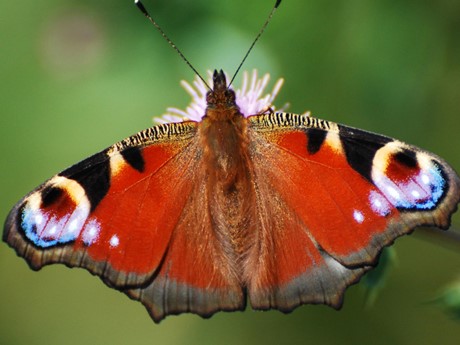Newly discovered first flowering records fill historical gap
Georgia Dixson, 05/07/2021
Recently uncovered recordings of first flowering dates in Waterloo, Liverpool collected by George Essery Ellis (born 25th Feb 1927 and died 10th Feb 2015) have been found to have a significant relationship with temperature. The dataset records 15 species spanning much of 1967 to 2014 - a significant portion of George’s life. This period is relatively sparsely covered in Nature’s calendar records, making it a valuable historical record.
These records were kindly given to the University of Liverpool by George’s neighbours following his death in 2014. George had collected a lot of information about the species in his garden and those seen on walks, including snowdrops, bluebells, and lilacs. Their flowering varies from late winter to late summer. These lengthy records from a single location are very valuable and allow for a detailed analysis with their relationship to temperature fluctuations.
Why is George’s data valuable?
Phenology refers to the study of the timing of recurring biological events, and the driving factors of these, such as temperature, sunlight hours, and rainfall. The ‘first flowering’ is an example of a phenological event, just as bird migration, fruit ripening and leaf-fall are too.
There was lack of a UK-wide phenology network for the second half of the 20th century – the Royal Meteorological Society covered 1875-1947, and then Nature’s Calendar was established in 1998. Consequently, George’s data helps fill this ‘gap’ as observations begin in 1967 and end in 2014. There are other historical records bridging this gap too – such as Jean Coombes oak budburst records – but this period is relatively lacking in phenological data.
These lengthy records of George’s, with more than 30 years, allow for a long-term trend to be identified, especially as most species have continuous records (i.e., no gaps).
Four of George’s species overlapped with existing Nature’s Calendar records – snowdrops, bluebells, lilacs, and crocuses – which allowed for comparisons. First flowering dates were shown to be very similar to both regional and national records, with the precise date differing by 20 days or less. In addition, the long-term trends of first flowering data were very similar between each dataset. This consistency proves George’s data to be a reliable source. Differences can be attributed to the different locations; Nature’s Calendar data covers the whole of the UK, and thus a wide range of climates, affecting phenology.
Nature’s Calendar records were vital for validating George’s records.
Long-term change
Almost all species in George’s recordings showed a significant change over the observational period (within 1967-2014).
However, the direction of this change varied; it was nearly equally split between those showing a delayed first-flowering date and those having an earlier flowering.
Species with the strongest trends including snowdrops, bluebells and montbretia which were flowering earlier, and crocuses, pinks and lupins which show delayed flowering.

Were George’s observations influenced by temperature fluctuations?
All species showed a significant positive correlation with temperature – meaning that hotter temperatures (in the 5 or so months before first flowering) coincided with an earlier first flowering.
Snowdrops show a steadily earlier flowering of around half a day per year. They first flowered between January 11th and March 6th across the observational period (1975-2015). The months investigated for a relationship with temperature were therefore from the November of the previous year through to March.

Most species were impacted by the temperature of two or three months, usually those immediately preceding flowering or during. These species tended to have a stronger relationship with temperature than those with just one month’s temperature influencing flowering; 60+% of their variations in flowering onset could be attributed to temperature, as opposed to ~30%.
Species seemingly being affected by just one month’s temperature were also those with delayed trends. This suggests that there is not a very linear relationship between these variables. This could be a result of other climatic variables – such as rainfall – or the lack of a chilling requirement (some plants require a certain coldness to instigate flowering).
This research wouldn’t have been possible without all the dedicated citizen scientists submitting records to Nature’s Calendar. Thank you to everyone and I hope that the research on George’s lengthy dataset has provided some inspiration for long-term recording.
George Essery Ellis made records of phenology and other natural phenomena throughout his life. The phenological observations were passed on to the School of Environmental Science, University of Liverpool, by his neighbours Tina Lonsdale and Brian Boothroyd in 2019. Georgia Dixson transcribed the records and conducted all analysis as part of her undergraduate dissertation project, under the supervision of Dr Andrew Hacket-Pain and with the support of Lorienne Whittle.

